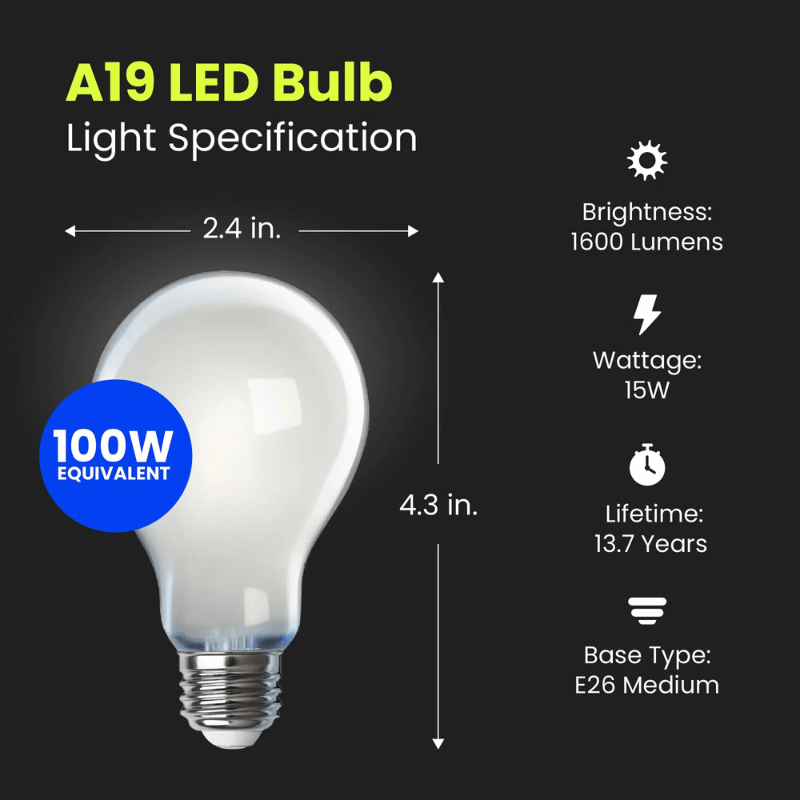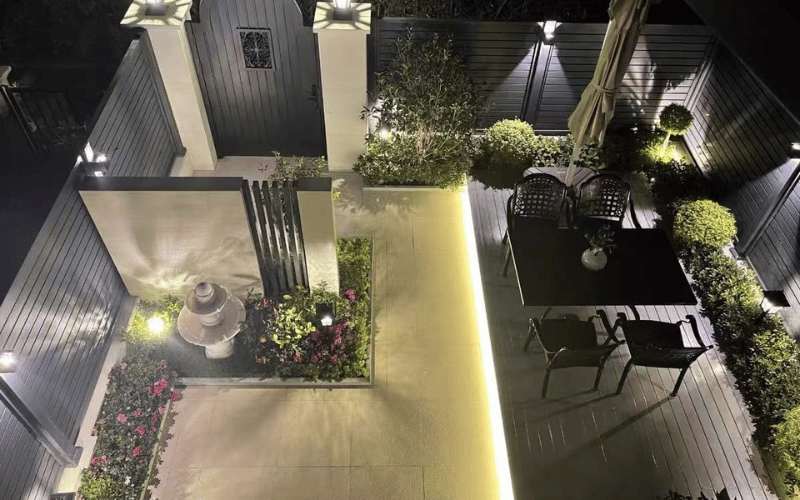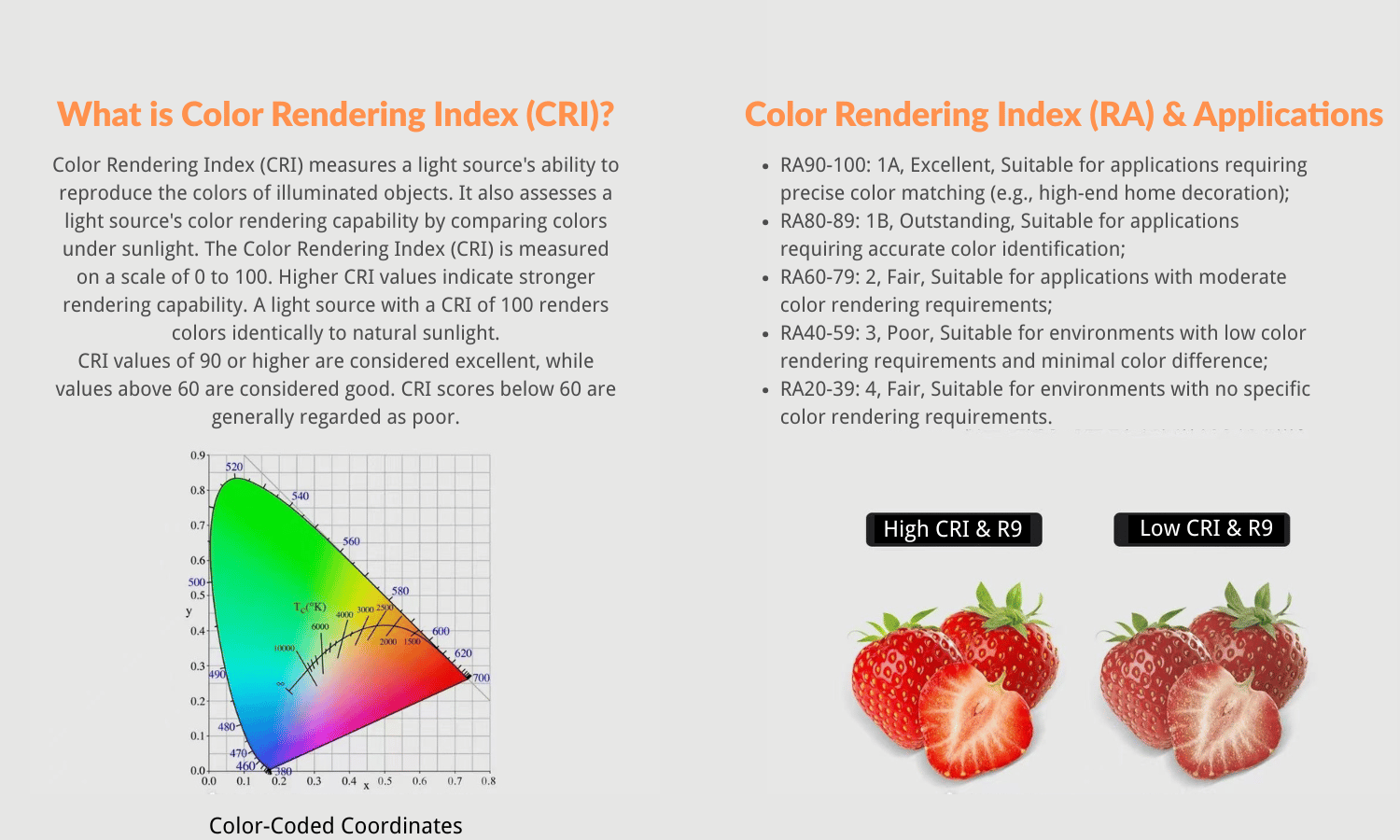Understanding lighting metrics, such as watts, lumens, and lux, is essential for anyone seeking to select the right lighting solutions. In the past, people relied on wattage as the primary indicator of brightness. However, with the rise of LED technology, this approach has become outdated. LEDs have revolutionized lighting by offering more efficient and customizable options, making it necessary to focus on more precise metrics like lumens and lux. These terms may seem technical, but they hold the key to selecting lighting that meets your specific needs—whether it’s for a cozy living room, a well-lit workspace, or a safe outdoor area.
Many people still associate brightness with wattage, but this can lead to confusion. For example, a 60-watt incandescent bulb and a 10-watt LED bulb can produce the same amount of light, measured in lumens. Similarly, lux helps you understand how light is distributed over a specific area, which is crucial for tasks requiring focused illumination. By shifting the focus from watts to lumens and lux, you can make smarter, more energy-efficient choices.
This article aims to demystify these lighting metrics and empower you to make informed decisions. Whether you’re upgrading your home lighting or planning a large-scale project, understanding these terms will help you balance brightness, efficiency, and cost effectively. Let’s dive in and illuminate the path to better lighting!

Table of Contents
ToggleWhat Are Watts, Lumens, and Lux?
Having spent decades in the solar street lighting industry, I’ve seen firsthand how understanding lighting metrics can transform the way we approach illumination. Let me break down these three critical terms—watts, lumens, and lux—so you can make informed decisions for your lighting needs.
Watts: Energy Consumption, Not Brightness
For years, people equated watts with brightness. Back in the incandescent era, this made sense—higher wattage generally meant a brighter bulb. A 100-watt bulb was more colorful than a 60-watt bulb, and that was the end of the story. But watts don’t measure brightness; they measure energy consumption. This distinction became crucial with the advent of LED technology. For example, a 10-watt LED can produce the same brightness as a 60-watt incandescent bulb, using a fraction of the energy. In my experience, many clients initially struggle with this shift, but once they understand that watts only tell you how much power a light consumes, they start focusing on more meaningful metrics like lumens and lux.
Lumens: The True Measure of Brightness
Lumens measure the total amount of visible light a source emits. Think of it as the “brightness output” of a light. This metric allows you to compare different lighting technologies on an even playing field. For instance, when designing solar streetlights, I always prioritize lumens over watts because it directly reflects how much light the fixture will produce. A 1,000-lumen LED light will illuminate a pathway far better than a 500-lumen one, regardless of their wattage. This clarity is essential in solar lighting, where energy efficiency and brightness must work hand in hand. I often guide clients to focus on lumens when selecting lights for outdoor spaces, ensuring they achieve the desired brightness without wasting energy.

Lux: Light Intensity Where It Matters
While lumens tell you how much light a source emits, lux measures how that light is distributed over a specific area. One lux equals one lumen per square meter. This metric is critical in real-world applications. For example, a 1,000-lumen light spread over a large parking lot will have a lower lux level than the same light focused on a smaller area, like a pathway. In my projects, I use lux measurements to ensure optimal light distribution. For instance, when installing solar streetlights, I calculate lux levels to ensure even coverage and avoid dark spots. This attention to detail ensures safety and functionality, whether it’s for a residential street or a commercial parking lot.
By understanding these metrics—watts for energy consumption, lumens for brightness, and lux for intensity—you can make smarter lighting choices. Over the years, I’ve helped countless clients navigate these terms to find solutions that balance efficiency, brightness, and cost. With this knowledge, you’ll be better equipped to select lighting that truly meets your needs.

Why Wattage Alone Is No Longer Enough
The way we evaluate lighting has undergone a seismic shift over the years. In the past, wattage was the go-to metric for determining brightness. If you wanted a brighter light, you simply chose a higher-wattage bulb. However, with the rise of energy-efficient technologies like LEDs, wattage has become an outdated and unreliable measure of brightness. Let me explain why.
The Inefficiency of Incandescent Bulbs
Incandescent bulbs, once the standard for lighting, are incredibly inefficient. They convert only about 10% of the energy they consume into visible light—the rest is wasted as heat. For example, a 100-watt incandescent bulb produces around 1,600 lumens, but most of that energy is lost in the process. This inefficiency not only drives up energy costs but also limits the lifespan of the bulb. When LEDs entered the scene, they completely disrupted this model by offering a far more efficient way to produce light.
LEDs: More Lumens, Less Energy
LEDs have revolutionized lighting by producing significantly more lumens per watt. This means they generate more brightness while consuming far less energy. For instance, a 10-watt LED can easily match or exceed the brightness of a 60-watt incandescent bulb. In my work designing solar streetlights, this efficiency is a game-changer. Solar systems rely on limited energy stored in batteries, so every watt saved translates to longer runtimes and better performance. By focusing on lumens rather than wattage, I help clients achieve the brightness they need without overloading their systems or wasting energy.
Luminous Efficacy: The New Gold Standard
To truly evaluate lighting efficiency, you need to look at luminous efficacy, which measures how many lumens a light source produces per watt of energy consumed. This metric is critical in my industry, where balancing brightness and energy efficiency is paramount. For example, a high-quality LED streetlight might have a luminous efficacy of 150 lumens per watt, compared to just 15 lumens per watt for an incandescent bulb. This tenfold improvement allows us to design lighting systems that are not only brighter but also more sustainable and cost-effective.
When I consult with clients, I always emphasize the importance of luminous efficacy. It’s the key to understanding why wattage alone is no longer enough. By shifting the focus to lumens and efficiency, you can make smarter choices that save energy, reduce costs, and deliver the performance you need. Whether you’re lighting a residential street or a large commercial area, understanding this metric will help you get the most out of your investment.
The Relationship Between Watts, Lumens, and Lux
In the world of lighting, I’m often asked to clarify the relationship between watts, lumens, and lux. These three metrics are interconnected, and understanding how they work together is essential for designing effective lighting solutions. Let me break it down for you with practical insights and real-world applications.
Watts: The Energy Input
Watts measure how much energy a light source consumes. This is the starting point for understanding a light’s performance, but it doesn’t tell you how bright the light will be. For example, a 10-watt LED and a 10-watt incandescent bulb consume the same amount of energy, but their brightness levels are worlds apart. In my work, I’ve seen clients initially focus on wattage, only to realize that it’s not the best indicator of performance. Instead, we need to look at how efficiently that energy is converted into light, which brings us to lumens.
Lumens: The Total Light Output
Lumens measure the total amount of visible light a source emits. This is the metric that truly defines brightness. The efficiency of converting watts into lumens is called luminous efficacy, and it varies significantly between lighting technologies. For instance, an incandescent bulb might produce 15 lumens per watt, while a high-quality LED can deliver 150 lumens per watt. Here’s a simple formula I often use when explaining this to clients:
Lumens = Watts × Luminous Efficacy
So, if you have a 10-watt LED with a luminous efficacy of 150 lumens per watt, it will produce 1,500 lumens. This clarity helps my clients understand why LEDs are far superior for energy-efficient lighting, especially in solar applications where every watt matters.
Lux: The Light Intensity Over an Area
While lumens tell you how much light a source emits, lux measures how that light is distributed over a specific area. One lux equals one lumen per square meter. This metric is critical for real-world applications, as it determines how well-lit a space will feel. For example, a 1,500-lumen light spread over a 10-square-meter area will have an intensity of 150 lux:
Lux = Lumens ÷ Area (m²)
In my projects, I use lux calculations to ensure optimal light distribution. For instance, when designing solar streetlights for a parking lot, I calculate the lux levels to avoid dark spots and ensure even coverage. This attention to detail not only enhances safety but also maximizes the efficiency of the lighting system.
Bringing It All Together
Understanding the relationship between watts, lumens, and lux allows you to evaluate lighting solutions holistically. Watts tell you how much energy a light consumes, lumens reveal how bright it is, and lux shows how effectively that brightness is distributed. By focusing on these metrics, I’ve helped countless clients design lighting systems that are both efficient and effective. Whether you’re illuminating a small pathway or a large commercial area, these principles will guide you to the right solution.
How to Choose the Right Lighting
After decades of working in the solar street lighting industry, I’ve guided countless clients through the process of selecting the perfect lighting for their needs. Whether you’re lighting your home or a large outdoor space, the key is to focus on the right metrics—lumens, lux, and even factors like color temperature and rendering. Let me walk you through how to make informed decisions for both home and commercial applications.
For Home Use: Balancing Brightness and Ambiance
When choosing lighting for your home, it’s essential to focus on lumens for overall brightness and lux for room-specific needs. Each space in your home serves a different purpose, and the lighting should reflect that. For example:
- Living Rooms: Aim for around 200 lux to create a cozy, relaxing atmosphere. A 1,500-lumen light spread over a 7.5-square-meter area will achieve this level of brightness.
- Kitchens: These spaces require more focused lighting for tasks like cooking and food preparation. A lux level of 500 is ideal, which might mean using multiple light sources or higher-lumen fixtures.
Beyond brightness, two other factors play a significant role in creating the right ambiance:
- Correlated Color Temperature (CCT): This measures the warmth or coolness of light, expressed in Kelvin (K). For a warm, inviting feel, choose lights with a CCT of 2,700K to 3,000K. For task-oriented spaces like kitchens or home offices, a cooler light of 4,000K to 5,000K works better.
- Color Rendering Index (CRI): CRI measures how accurately a light source reveals the true colors of objects. A CRI of 80 or higher is recommended for home use, as it ensures colors appear natural and vibrant.
In my experience, homeowners often overlook these details, focusing solely on brightness. But by considering lux, CCT, and CRI, you can create a lighting setup that’s both functional and aesthetically pleasing.
For Commercial or Outdoor Use: Prioritizing Safety and Precision
When it comes to commercial or outdoor lighting, the stakes are higher. Proper illumination is critical for safety, functionality, and even compliance with regulations. Here’s how to approach it:
-
Lux Levels for Safety: Different applications require different lux levels. For example, road lighting typically needs 20-30 lux to ensure visibility for drivers, while stadium lighting can demand 500 lux or more to illuminate large areas effectively. In my projects, I always calculate lux levels carefully to avoid under- or over-lighting, which can compromise safety or waste energy.
-
Lighting Simulations and Lux Meters: For precise planning, I rely on lighting simulations and lux meters. Simulations allow me to model how light will be distributed across a space, identifying potential dark spots or areas of excessive brightness. Lux meters, on the other hand, provide real-world measurements to verify that the installation meets the required standards. For example, when designing a solar streetlight system for a parking lot, I use these tools to ensure even coverage and compliance with local regulations.
Additionally, consider the durability and efficiency of your lighting. Outdoor fixtures should be weather-resistant and energy-efficient, especially if they’re part of a solar system. High luminous efficacy (lumens per watt) is a must to maximize performance while minimizing energy consumption.

My Final Advice
Choosing the right lighting is about more than just picking a bright bulb. It’s about understanding how lumens, lux, CCT, and CRI work together to meet your specific needs. Whether you’re lighting a cozy living room or a sprawling commercial space, these metrics will guide you to the best solution. Over the years, I’ve seen how a well-planned lighting setup can transform a space, and I’m confident that with the right approach, you can achieve the same results.
Factors That Impact Lighting Efficiency
When it comes to lighting efficiency, several key factors work together to determine how effectively a light source converts energy into usable illumination. Understanding these elements can help you choose lighting solutions that deliver maximum performance while minimizing energy waste. Let’s break down the most critical factors.
Luminous Efficacy: More Light, Less Energy
Luminous efficacy, measured in lumens per watt (lm/W), is the cornerstone of lighting efficiency. It tells you how much visible light a fixture produces for every watt of energy it consumes. Higher efficacy means you get more brightness without increasing energy usage. For example, a high-quality LED with an efficacy of 150 lm/W will produce 1,500 lumens using just 10 watts, whereas a less efficient light might require 20 watts to achieve the same output. This is especially important in solar lighting, where energy is limited to what the system’s panels and batteries can provide. By prioritizing high-efficacy fixtures, you can achieve brighter, longer-lasting illumination without overloading your system.
Heat Dissipation: Protecting Performance
Heat is the enemy of LED performance. Excessive heat can reduce brightness, shorten the lifespan of the light, and even lead to failure. This is why the materials and design of a fixture’s heat sink are so critical. Aluminum, for instance, is commonly used in LED fixtures because it efficiently dissipates heat. Additionally, well-designed heat sinks with fins or vents allow for better airflow, keeping the LEDs cool and maintaining their performance over time. When evaluating lighting options, always look for fixtures with robust heat management systems to ensure consistent efficiency and durability.
LED Drivers: The Unsung Heroes of Efficiency
The LED driver is the component that regulates the power supply to the light. An inefficient driver can waste energy, generate excess heat, and compromise the overall performance of the fixture. High-quality drivers, on the other hand, ensure that the LEDs receive a stable and precise current, minimizing energy loss and extending the lifespan of the light. In solar street lighting, where every watt counts, I always recommend fixtures with efficient, reliable drivers to maximize the system’s output and reliability.
Lens and Light Distribution: Shaping the Illumination
The design of the lens plays a crucial role in how light is distributed. A well-designed lens can focus light where it’s needed most, reducing waste and improving efficiency. For example, in a solar streetlight, a lens that directs light downward and evenly across a roadway ensures optimal coverage without spilling light into unwanted areas. This not only enhances functionality but also reduces light pollution. When selecting lighting, consider how the lens design aligns with your specific application to ensure you’re getting the most out of your fixture.
Energy Labels: A Quick Guide to Efficiency
Energy labels, such as the European ErP (Energy-related Products) directive, provide a straightforward way to identify efficient lighting products. These labels rate fixtures based on their energy consumption and performance, making it easier for consumers to compare options. While labels don’t tell the whole story, they’re a helpful starting point for narrowing down your choices to energy-efficient solutions.
By understanding these factors—luminous efficacy, heat dissipation, LED drivers, lens design, and energy labels—you can make smarter decisions when selecting lighting. Each element plays a vital role in ensuring that your lighting system is not only efficient but also reliable and long-lasting.
Practical Examples and Calculations
Understanding lighting metrics becomes much easier when you see them applied in real-world scenarios. Let’s explore some practical examples of converting watts to lumens, lumens to lux, and how to compare the efficiency of different lighting technologies. These examples will help you make informed decisions for your lighting needs.
Converting Watts to Lumens
To calculate lumens, you need to know the luminous efficacy of the light source, which is measured in lumens per watt (lm/W). Here’s a simple example:
-
Incandescent Bulb: A 60-watt incandescent bulb typically has a luminous efficacy of 15 lm/W.
Lumens = Watts × Luminous Efficacy
Lumens = 60 × 15 = 900 lumens -
LED Bulb: A 10-watt LED with a luminous efficacy of 150 lm/W produces:
Lumens = 10 × 150 = 1,500 lumens
This comparison shows that the LED produces significantly more light while consuming far less energy.
Comparing Luminous Efficacy Across Technologies
Here’s a quick comparison of the luminous efficacy of different lighting technologies:
| Lighting Technology | Luminous Efficacy (lm/W) | Example |
|---|---|---|
| Incandescent | 10–15 | 60W bulb = ~900 lumens |
| Compact Fluorescent (CFL) | 50–70 | 15W CFL = ~900 lumens |
| LED | 100–200 | 10W LED = ~1,500 lumens |
| High-Pressure Sodium | 80–150 | Common in older streetlights |
This table highlights why LEDs have become the preferred choice for energy-efficient lighting, especially in applications like solar streetlights where energy conservation is critical.
Calculating Lux in a Room or Outdoor Area
Lux measures the intensity of light over a specific area. To calculate lux, use the formula:
Lux = Lumens ÷ Area (m²)
Let’s walk through an example:
- You have a 1,500-lumen LED light installed in a room that is 10 square meters.
Lux = 1,500 ÷ 10 = 150 lux
This level of illumination is suitable for general living spaces like a bedroom or living room.
For outdoor applications, let’s say you’re lighting a 50-square-meter parking lot with a 10,000-lumen solar streetlight:
Lux = 10,000 ÷ 50 = 200 lux
This level of brightness ensures safety and visibility for vehicles and pedestrians.
Why These Calculations Matter
By understanding how to convert watts to lumens and calculate lux, you can tailor your lighting to meet specific needs. Whether you’re illuminating a cozy living room or a large outdoor area, these practical examples and comparisons provide the tools you need to make efficient and effective choices.
Advanced Considerations for Professionals
For professionals working in lighting design or solar street lighting projects, understanding advanced metrics and tools is essential to deliver high-quality, efficient, and application-specific solutions. Let’s dive into some critical considerations that go beyond the basics.
CCT and CRI: Fine-Tuning Lighting Quality
Two often-overlooked metrics—Correlated Color Temperature (CCT) and Color Rendering Index (CRI)—play a significant role in determining the quality and suitability of lighting for specific applications.
-
CCT (Correlated Color Temperature): Measured in Kelvin (K), CCT defines the color appearance of light, ranging from warm (yellowish) to cool (bluish). For example, a 2,700K light creates a warm, cozy atmosphere, ideal for residential spaces, while a 5,000K light provides a crisp, daylight-like effect, perfect for task-oriented environments like offices or industrial areas. In outdoor solar lighting, I often recommend 4,000K to 5,000K for roadways and parking lots, as it balances visibility and comfort without being overly harsh.
-
CRI (Color Rendering Index): CRI measures how accurately a light source reveals the true colors of objects, on a scale from 0 to 100. A CRI of 80 or higher is generally considered good for most applications, while a CRI of 90+ is ideal for spaces where color accuracy is critical, such as retail stores or art galleries. For solar streetlights, a CRI of 70–80 is typically sufficient to ensure clear visibility without unnecessary energy consumption.
By carefully selecting the right CCT and CRI, you can tailor lighting to meet the specific needs of a project, whether it’s enhancing safety on a roadway or creating an inviting ambiance in a public park.

Binning in LEDs: Ensuring Consistency and Quality
Not all LEDs are created equal, even within the same product line. During manufacturing, LED chips are sorted into “bins” based on their performance characteristics, such as brightness, color temperature, and voltage. This process, known as binning, ensures consistency in the final product.
-
Why Binning Matters: Without proper binning, you might end up with lights that vary in brightness or color, leading to uneven illumination. For example, in a solar streetlight project, inconsistent color temperatures can create a patchy, unprofessional appearance, while variations in brightness can compromise safety.
-
What to Look For: High-quality manufacturers provide detailed binning information, ensuring that all LEDs in a fixture meet strict performance standards. When sourcing products, always check for binning specifications to avoid surprises and ensure uniformity across your installation.
Understanding binning allows you to select products that deliver consistent, reliable performance, which is especially critical in large-scale projects where uniformity is key.
Lighting Simulations: Designing with Precision
Advanced lighting design requires more than just calculations—it demands visualization and precision. Lighting simulation tools and software allow professionals to model how light will behave in a given space, helping to optimize placement, intensity, and distribution.
-
Popular Tools: Software like Dialux, Relux, and AGi32 are widely used in the industry. These tools enable you to input specific parameters, such as lumens, CCT, and lux levels, and generate detailed visualizations of how the light will interact with the environment. For example, when designing a solar streetlight system for a parking lot, I use these tools to identify potential dark spots, ensure even coverage, and verify compliance with local lighting standards.
-
Why Simulations Matter: Simulations save time and resources by allowing you to test different configurations before installation. They also provide clients with a clear visual representation of the final result, making it easier to communicate the value of your design.
By leveraging lighting simulations, you can achieve precise, data-driven designs that maximize efficiency and meet the specific needs of your project.
Bringing It All Together
CCT and CRI ensure the light quality matches the application, binning guarantees consistency and reliability, and lighting simulations provide the precision needed for advanced designs. These considerations are not just technical details—they are the foundation of professional-grade lighting solutions that deliver both performance and satisfaction.
Future Trends in Lighting
The lighting industry is evolving rapidly, driven by technological advancements and a growing emphasis on sustainability. Staying ahead of these trends is essential for anyone involved in lighting design or installation. Let’s explore some of the most significant developments shaping the future of lighting.
Innovations in LED Technology
LED technology continues to push boundaries, delivering higher performance and greater efficiency with each passing year. Two key areas of innovation stand out:
-
Higher Luminous Efficacy: Manufacturers are consistently improving the luminous efficacy of LEDs, with some cutting-edge models now exceeding 200 lumens per watt. This means brighter lights with even lower energy consumption. For example, in solar street lighting, higher efficacy allows for smaller solar panels and batteries, reducing system costs while maintaining or improving performance. This is particularly valuable in large-scale projects where every watt saved translates to significant cost and energy savings.
-
Smart Lighting Systems: The integration of smart technology into lighting systems is transforming how we control and optimize illumination. Features like motion sensors, adaptive dimming, and remote monitoring are becoming standard in modern lighting solutions. For instance, a solar streetlight equipped with motion sensors can operate at a lower brightness level during off-peak hours and increase intensity when movement is detected. This not only conserves energy but also extends the lifespan of the system. Additionally, remote monitoring allows for real-time performance tracking and maintenance alerts, reducing downtime and operational costs.
These advancements are making lighting systems more efficient, adaptable, and user-friendly, paving the way for smarter, more sustainable solutions.
The Growing Importance of Sustainability
Sustainability is no longer just a buzzword—it’s a driving force in lighting design. As global energy demands rise and environmental concerns grow, the focus on energy-efficient and eco-friendly lighting solutions has never been greater.
-
Energy Efficiency: LEDs are already the most energy-efficient lighting technology available, but the push for even greater efficiency continues. Governments and organizations worldwide are setting stricter energy standards, encouraging the adoption of high-efficacy lighting systems. In solar lighting, this trend aligns perfectly with the goal of reducing reliance on non-renewable energy sources. By combining high-efficiency LEDs with renewable solar power, we can create systems that are both cost-effective and environmentally responsible.
-
Circular Design and Recycling: The industry is also moving toward circular design principles, which prioritize the reuse and recycling of materials. For example, some manufacturers are developing modular lighting systems that allow for easy replacement of individual components, such as LED chips or drivers, without discarding the entire fixture. This reduces waste and extends the lifecycle of the product, making it a more sustainable choice.
-
Dark Sky Compliance: Another emerging trend is the focus on reducing light pollution. Dark sky-compliant lighting fixtures are designed to minimize upward light spill, preserving the natural night sky while still providing adequate illumination. This is particularly important in outdoor applications like street lighting, where excessive light can disrupt ecosystems and obscure the stars.
What This Means for Lighting Professionals
The future of lighting is about more than just brighter and more efficient fixtures—it’s about creating systems that are smarter, more sustainable, and better aligned with the needs of both people and the planet. By embracing these trends, professionals can deliver solutions that not only meet today’s demands but also anticipate the challenges of tomorrow. Whether it’s through adopting the latest LED innovations or designing systems with sustainability in mind, the opportunities to make a meaningful impact are endless.
FAQs
Q: How do I calculate the number of lumens I need for a specific room?
A: To calculate the required lumens, multiply the recommended lux level for the room by its area in square meters. For example, if your living room is 20 square meters and requires 200 lux, you’ll need 200 × 20 = 4,000 lumens. Consider factors like wall color and ceiling height, as they can affect light distribution.
Q: What is the difference between warm white and cool white light?
A: Warm white light (2700K–3000K) creates a cozy, yellowish tone, perfect for living rooms and bedrooms. Cool white light (4000K–5000K) offers a bluish, brighter tone, making it ideal for kitchens, offices, and workspaces where focus is essential.
Q: Why is luminous efficacy important when choosing LED lights?
A: Luminous efficacy shows how efficiently a light source converts energy into visible light (lumens per watt). Higher luminous efficacy means the light uses less energy to produce the same brightness, saving you money on electricity bills.
Q: How does the placement of light fixtures affect lux levels?
A: The placement of light fixtures directly impacts lux levels by determining how evenly light spreads across a surface. Poor placement can create shadows or uneven lighting. Use lighting simulations or consult a professional to ensure proper light distribution.
Q: What is the difference between CRI and CCT, and why do they matter?
A: CRI (Color Rendering Index) measures how accurately a light source displays colors compared to natural sunlight. A CRI of 80 or higher works well for spaces where color accuracy matters, like retail stores or art studios. CCT (Correlated Color Temperature) measures the color tone of light in Kelvin (K). Warm light (2700K) feels relaxing, while cool light (5000K) feels energizing and focused.
Q: Can I use a lux meter to measure the brightness of my room?
A: Yes, you can use a lux meter to measure light intensity (lux) in a specific area. It helps you ensure your lighting meets recommended levels, such as 300 lux for offices or 500 lux for task lighting. Lux meters are especially useful for professional or commercial lighting setups.
Let me know if you’d like to add more FAQs or refine these further!
Conclusion
Choosing the right lighting starts with understanding the core metrics: watts, lumens, and lux. Watts measure energy consumption, lumens define the total light output, and lux determines how that light is distributed over a specific area. Together, these metrics provide the foundation for evaluating and selecting lighting solutions that meet your needs.
Beyond the basics, factors like luminous efficacy, lux levels, correlated color temperature (CCT), and color rendering index (CRI) play a crucial role in ensuring efficiency, functionality, and the desired ambiance. Whether you’re lighting a home, a commercial space, or an outdoor area, these considerations help you strike the perfect balance between performance and energy savings.
By making informed decisions and exploring advanced solutions like high-efficacy LEDs, smart lighting systems, and sustainable designs, you can achieve lighting that is not only effective but also future-ready. With the right knowledge and tools, you’re well-equipped to illuminate your spaces in the most efficient and impactful way possible.


